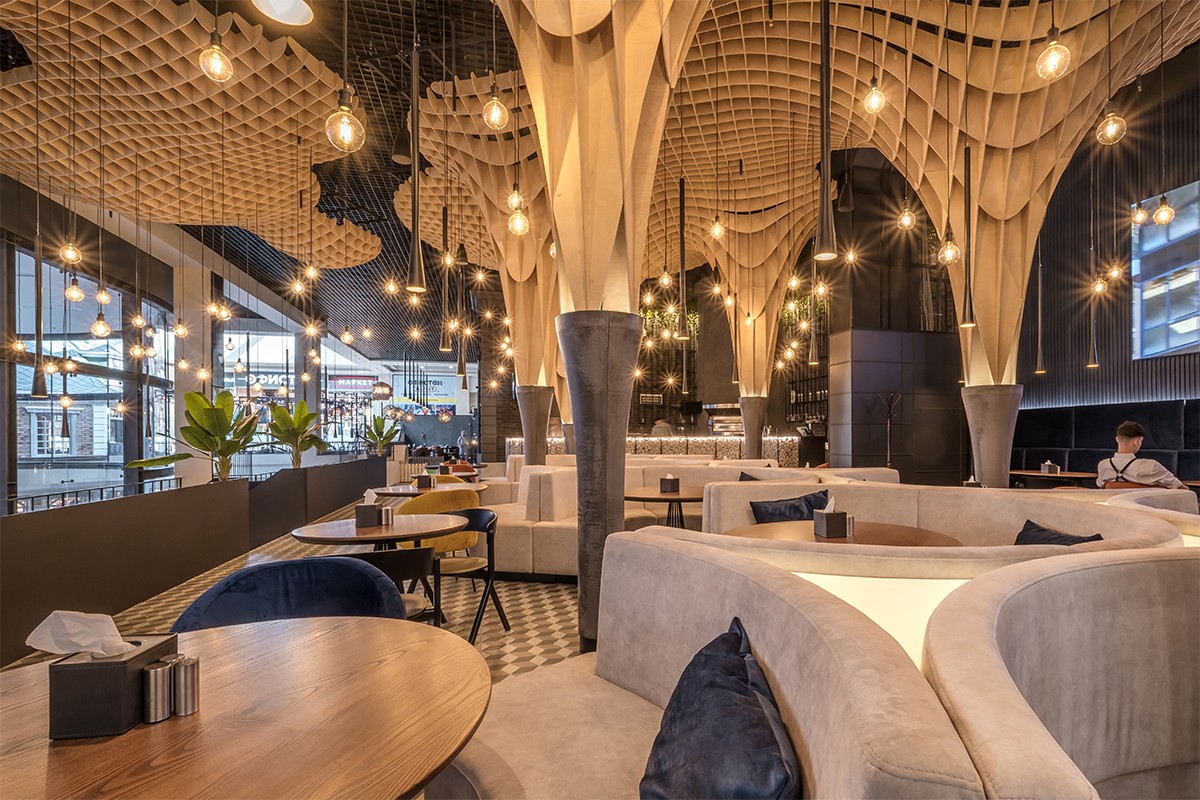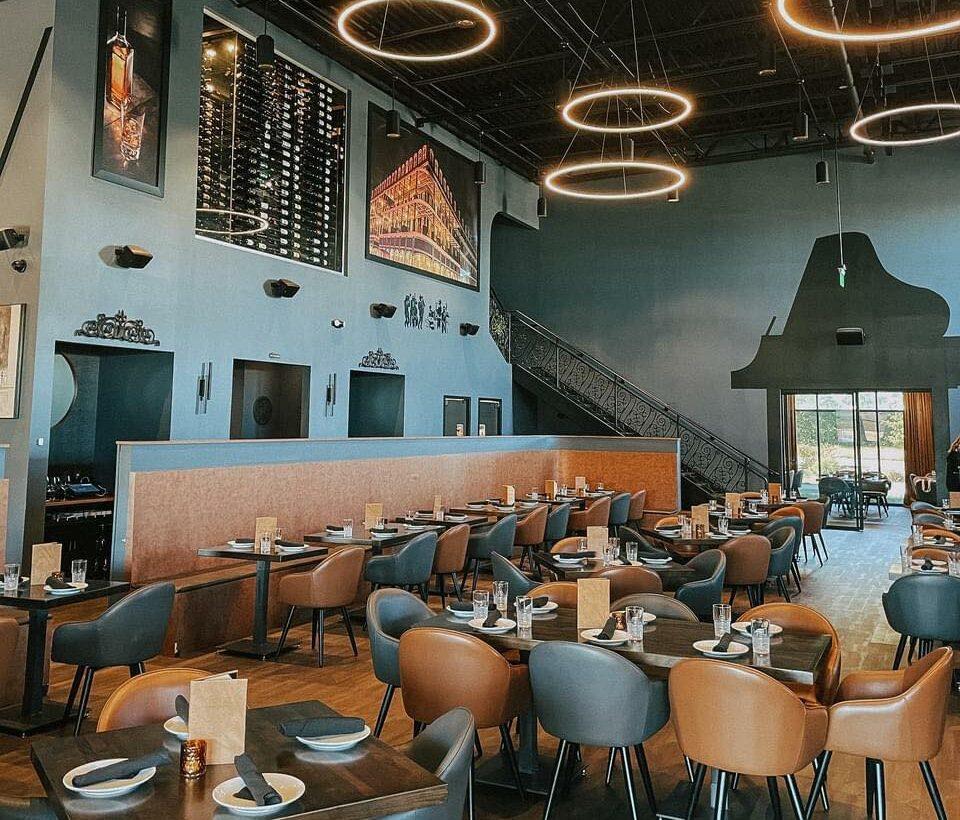Savor Authentic Asian Food With a Pan-Asian Spin for a Cooking Adventure
Embarking on a culinary trip via authentic Oriental cuisine, improved with a Pan-Asian twist, provides an one-of-a-kind possibility to check out the abundant tapestry of tastes that specify the region's varied culinary customs. As you ponder these luring recipes, think about the social stories and historical influences that form them, each bite providing a story waiting to be found. pan asian restaurant Islamabad.

Checking Out Pan-Asian Flavors
In the world of international gastronomy, Pan-Asian cuisine stands apart for its remarkable diversity and the unified interplay of tastes from numerous Oriental cultures. This cooking approach commemorates the rich practices and distinct ingredients discovered across the continent, creating a tapestry of preferences that is both appealing and enjoyable. Key to Pan-Asian cuisine is its capacity to balance different tastes-- sweet, salted, spicy, and sour-- while highlighting the quality and top quality of each component.
From the umami-rich soy sauce of Japan to the fiery chili peppers of Thailand, Pan-Asian cuisine supplies a comprehensive scheme of flavors. These components are typically integrated in innovative methods, improving meals with layers of complexity. For circumstances, making use of fragrant herbs such as lemongrass and cilantro, common in Vietnamese and Thai food, adds a rejuvenating illumination to recipes, while the incorporation of coconut milk provides a velvety, abundant structure.
The emphasis on fresh produce and aromatic flavors guarantees that each meal is not only a feast for the palate however also for the detects. Pan-Asian cuisine welcomes restaurants to start a cooking journey, checking out the large and varied landscapes of Oriental gastronomy with every bite.
Fusion Meals to Try
While Pan-Asian cuisine is commemorated for its conventional tastes, the modern-day culinary landscape is increasingly accepting blend meals that mix these traditional components with impacts from other areas. This innovative strategy not only honors the abundant heritage of Asian cookeries but also presents unique preference experiences that attract modern tastes.
An archetype of such a blend recipe is the Korean-Mexican taco, where seasoned bulgogi beef is wrapped in a cozy tortilla, covered with kimchi and a hot gochujang-infused salsa. This combination weds the vibrant, full-flavored tastes of Korea with the lively, fresh components of Mexican cuisine. Likewise, sushi burritos have acquired appeal, amalgamating the fragile virtuosity of Japanese sushi with the hearty, hand-held comfort of a burrito, typically including fusion ingredients like tempura shrimp and avocado with a drizzle of wasabi mayo.
An additional notable dish is Thai curry ramen, which instills the velvety, fragrant seasonings of Thai curry into the calming brew of typical Japanese ramen, creating a harmonious mix that entices the detects. These fusion dishes prolong past simple uniqueness; they represent a cooking discussion in between cultures, urging expedition and development on the planet of Pan-Asian food.
Crucial Ingredients and Flavors
To truly value Pan-Asian cuisine, one have to recognize the important ingredients and flavors that create its structure. This varied cooking style attracts from a rich tapestry of Oriental traditions, using a harmonious blend of appearances and flavors. Key active ingredients include soy sauce, fish sauce, and oyster sauce, which present a full-flavored umami deepness important to Asian meals. Corresponding to these are rice vinegar and mirin, offering a delicate acidity and sweetness.
Aromatic elements are pivotal, with lemongrass, ginger, and garlic being common across various Pan-Asian dishes. These components provide a great smelling base that enhances the complexity of tastes. Seasonings such as celebrity anise, cardamom, and cinnamon present heat and character, echoing impacts from regions like China and India.

Food Preparation Methods and Tips
Grasping the art of Pan-Asian food requires familiarity with its unique cooking techniques, each contributing to the vibrant tapestry of flavors this culinary tradition is celebrated for. Central to these methods is click for more info the stir-fry, a rapid food preparation method that protects the dietary integrity and dazzling colors of ingredients. Making use of a frying pan, the stir-fry approach permits for also warmth circulation, necessary for achieving the characteristic appearance and flavor balance of Pan-Asian recipes.
An additional basic technique is steaming, especially widespread in Chinese food. This mild method maintains the natural flavors and nutrients of components, making it perfect for seafood and veggies. Dumplings, a precious staple, commonly gain from steaming, resulting in soft, succulent appearances.
Barbecuing, additionally integral, imparts great smoky depths to recipes such as Oriental bulgogi or Japanese yakitori (Fine dining experience Islamabad). This method usually entails seasoning components, permitting tastes to permeate deeply prior to food preparation over an open flame or warm plate
Finally, understanding the art of stabilizing flavors-- sweet, sour, salted, bitter, and umami-- is important. Correctly layering these components can raise a recipe from normal to amazing, offering a facility and pleasing cooking experience that personifies the essence of Pan-Asian cuisine.
Dining Experiences Worldwide
Across the world, Pan-Asian cuisine supplies an unrivaled eating experience, commemorated for its rich tapestry of flavors and vibrant discussions. This cooking phenomenon has transcended social limits, capturing the hearts and tastes buds of food fanatics worldwide. In worldwide cities like New York, London, and Sydney, Pan-Asian dining establishments act as fusions where cooking traditions from Thailand, Japan, China, and past converge, providing restaurants with a diverse mix of recipes that highlight the area's variety.
The worldwide appeal of Pan-Asian cuisine depends on its capacity to supply both authenticity and technology. Chefs masterfully marry typical active ingredients such as lemongrass, soy sauce, and miso with contemporary methods, leading to dishes that are both acquainted and refreshingly new. This combination allows restaurants to start a culinary journey that appreciates heritage while welcoming modernity.
Additionally, dining experiences are elevated with thoughtfully developed atmospheres that reflect the principles of Pan-Asian appearances. From minimal Japanese-inspired interiors to lively Thai-themed spaces, each restaurant provides an one-of-a-kind setting that complements the culinary offerings. Because of this, patrons are not simply taking in a dish yet partaking in a social experience, making Pan-Asian eating a really global sensation.
Verdict
The exploration of Pan-Asian food offers a profound understanding of the intricate interaction of tastes and cooking customs throughout Asia. By embracing blend dishes such as Thai curry ramen and sushi burritos, the culinary trip not only highlights the adaptability of i thought about this typical components but likewise showcases cutting-edge contemporary techniques. This gastronomic journey, enriched by cooking approaches and necessary flavors, provides a distinct opportunity to value the multiculturalism and culinary creativity that specify Pan-Asian food on an international range.
Getting started on a culinary trip via genuine Eastern cuisine, improved with a Pan-Asian spin, provides an one-of-a-kind possibility to explore the abundant tapestry of flavors that define the region's varied cooking traditions.In the world of global gastronomy, Pan-Asian cuisine stands out for its remarkable variety and the unified interaction of tastes from various Asian societies. Key to Pan-Asian food is its ability to stabilize contrasting tastes-- pleasant, salted, spicy, and sour-- while highlighting the quality and high quality of each component.
